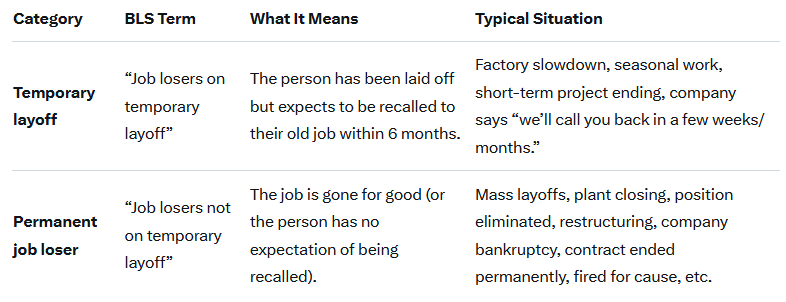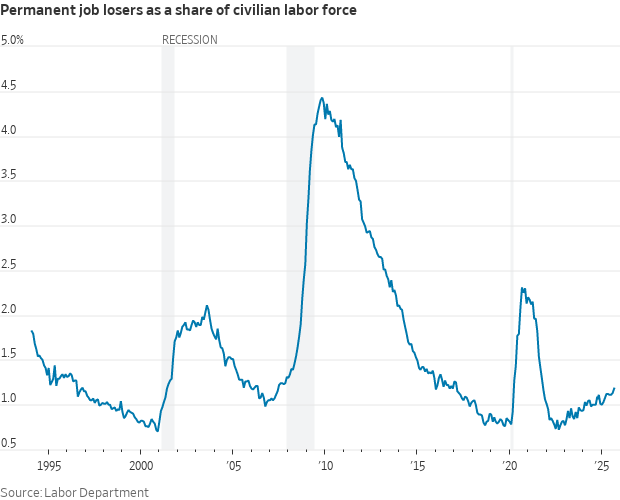China’s Xi speaks with Trump by phone, discusses Taiwan and bilateral ties
Given the two-month delay, Thursday’s BLS employment report on September labor market conditions was not nearly as pertinent as the BLS data typically is. Despite it being old news, it is worth sharing that the number of jobs increased by 119k, but the unemployment rate ticked up from 4.3% to 4.4%.
The markets didn’t seem to care much about the data, as it’s not likely to sway the Fed into cutting rates or refraining from doing so. While the employment data was stale, there is one lesser-followed component of the report worth elaborating on: permanent job losers. The BLS splits “job losers” into two categories, permanent and temporary. The table below helps appreciate the differences.
Given that the economy has been growing above trend over the last few years, the rising share of permanent job losers in the workforce suggests that layoffs are structural rather than cyclical. Keep in mind that even if a job loss is permanent, if the laid-off person gets a new job, they fall out of the permanent job loser category. As the graph below shows, the number of permanent job losers typically increases rapidly right before or during a recession. Additionally, permanent job losers decline during the economic recovery.
Dissecting the recent increase in permanent job losers yields a few questions worth considering.
- Is the K-shaped economy causing many industries to suffer, thereby permanently reducing headcount?
- Similarly, is AI already resulting in permanent job losses?
- Does the increasing share of permanent job losers portend that a recession is right around the corner?
- Is the increase just a normalization following the erratic labor market in the aftermath of the pandemic?

What To Watch Today
Earnings
- No notable earnings releases
Economy

The Week Ahead
This will be a quiet week as Wall Street takes a break for the Thanksgiving Holiday. In addition to Thursday’s closure, stocks and bonds will also close early at 1 pm ET on Friday. Of note this week will be the weekly ADP number and September’s retail sales and PPI reports. All three reports will come on Tuesday. Like the employment data last week, we are not sure how much the market will care about stale inflation and retail sales data. We suspect that ADP will continue to show no job growth.
Tweet of the Day

